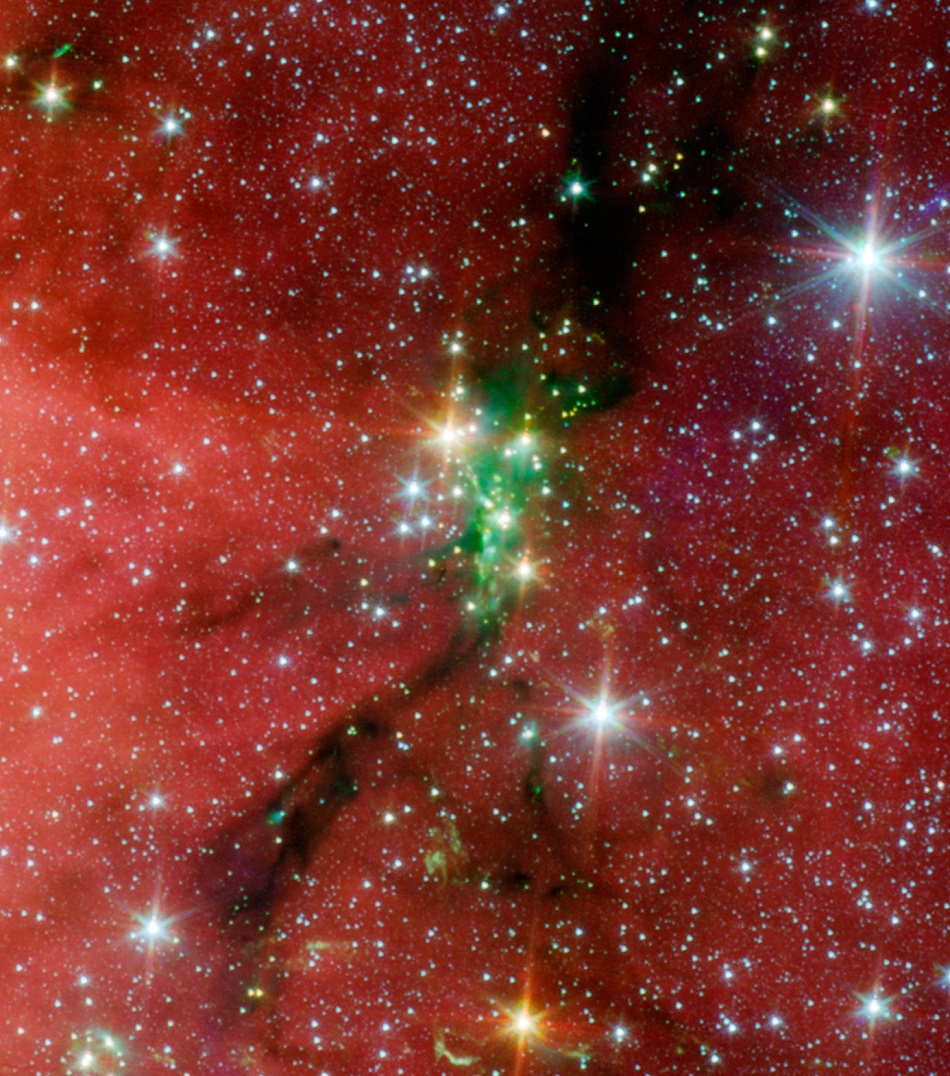Cosmos Serpens South
Serpens South is a relatively dense star cluster of about 7 x 10 light-years in diameter, located approximately 848 light-years away from Earth in the southern portion of the Serpens cloud, a star-forming molecular cloud in the constellation of Serpens (the Snake), which also hosts the famous and massive Serpens star cluster.
Human families may be bonded by blood, but stellar families are united by gravity. A family of stars, or star cluster, can contain hundreds or thousands of members. The Serpens South star cluster contains some 50 young stars – “siblings” – 35 of which are protostars, or stellar infants, that are just beginning to form. This star cluster was uncovered by infrared observations of the Spitzer Space Telescope. At visible wavelengths the stars are completely obscured by interstellar dust in the Serpens cloud.
The discovery of Serpens South is a direct result of the Gould’s Belt Legacy project, which aims to study all prominent star-forming regions within about 1,600 light-years of Earth. These regions together form a ring of molecular clouds and associated young stars known as the Gould’s Belt. The discovery will lead astronomers to more clues about how these cosmic families, which contain hundreds of gravitationally bound stars, form and interact.
In this image, the Serpens South stars are shown as green, yellow, and orange specks, sitting atop a black line that runs through the middle of the image. The “line” is a long, dense patch of cosmic dust and gas, which is currently condensing to form stars. Stars form when thick cosmic clouds collapse. Tints of green represent hot hydrogen gas. Spitzer can see this hydrogen gas “fingerprint” when the high-speed jets shooting out of the young stars violently collide with cool gas in the surrounding cloud. Wisps of red in the background are organic molecules called polycyclic aromatic hydrocarbons (PAHs). On Earth, PAHs are found on charred barbeque grills and in sooty automobile exhaust.
This picture is composed of three images taken on August 8, 2007 with the Spitzer Space telescope’s Infrared Array Camera (IRAC) at 3.6 (blue), 4.5 (green), and 5.8 (red) microns. North is up.
